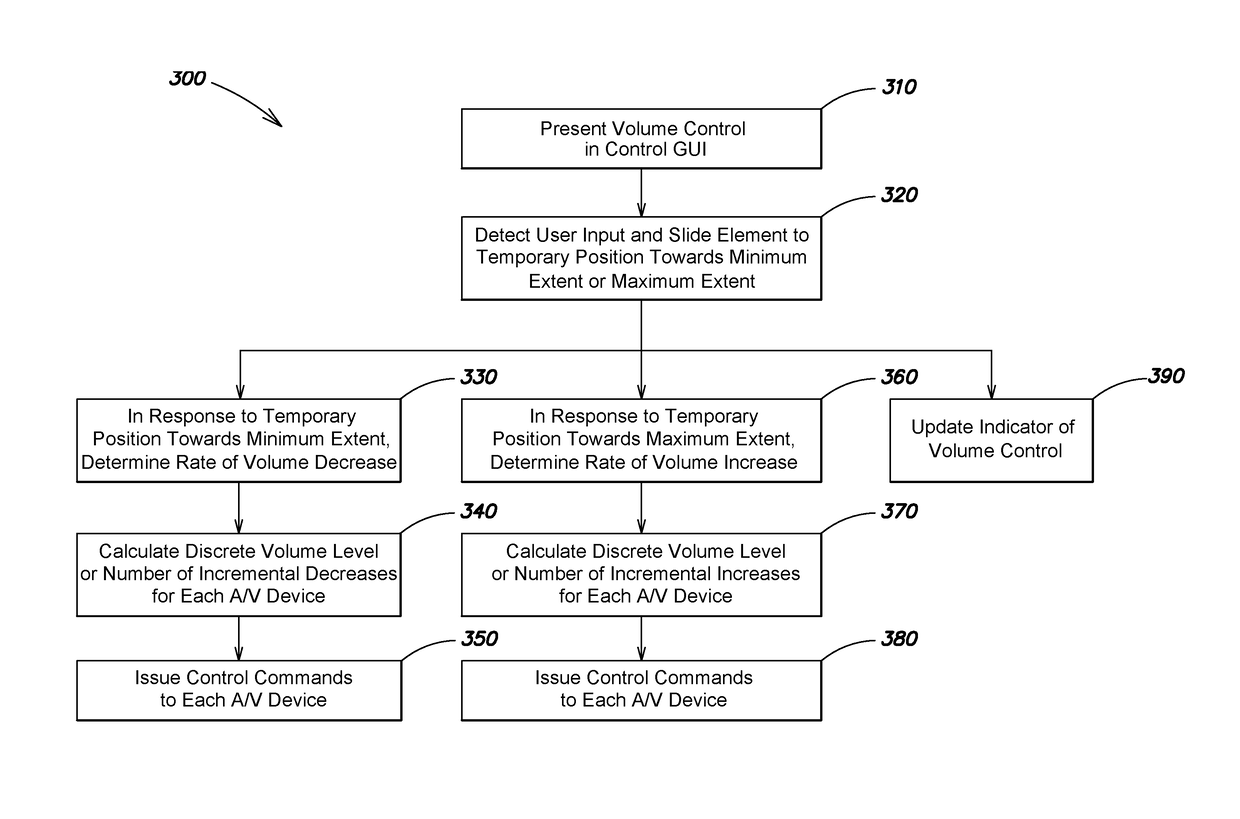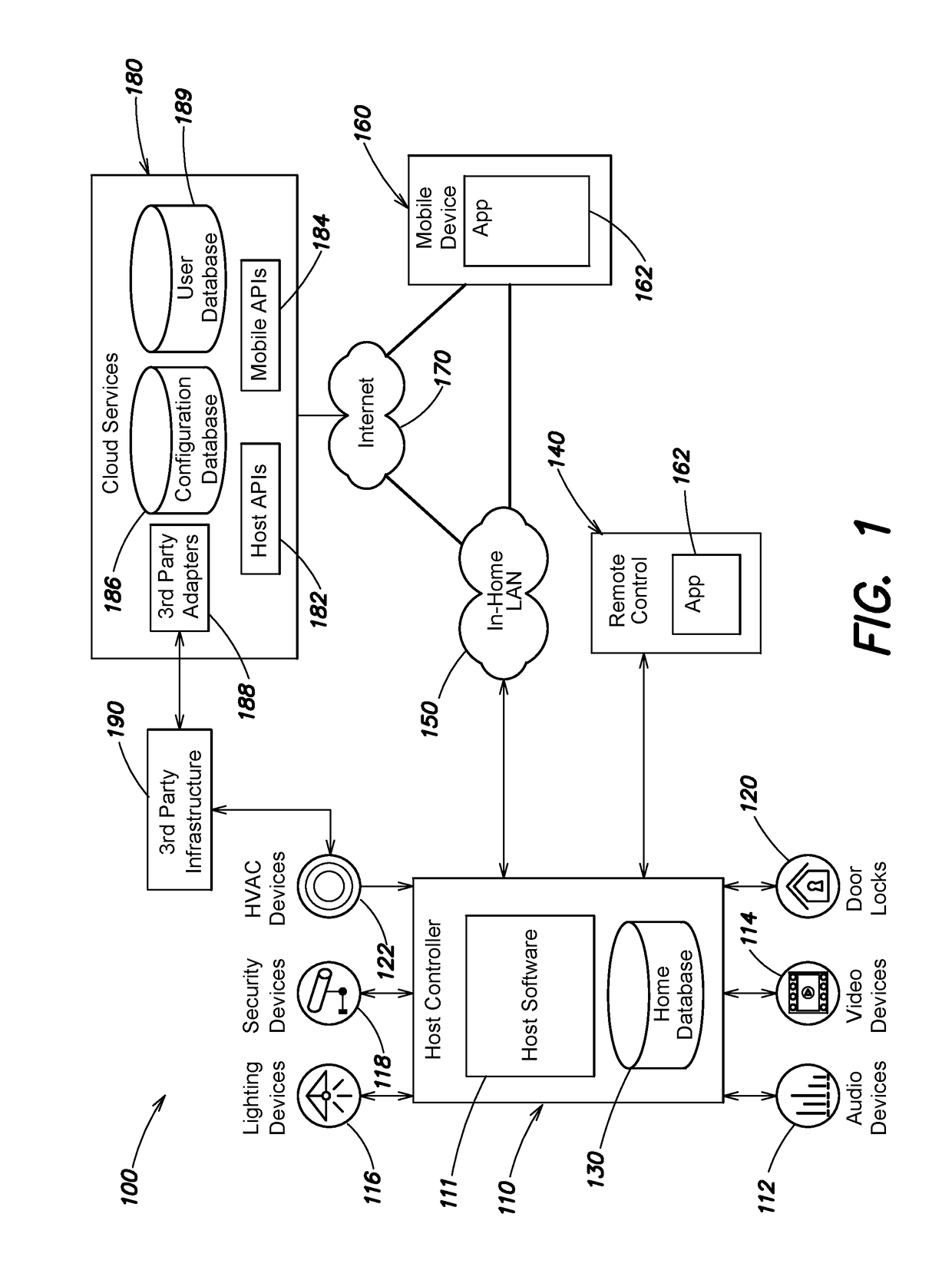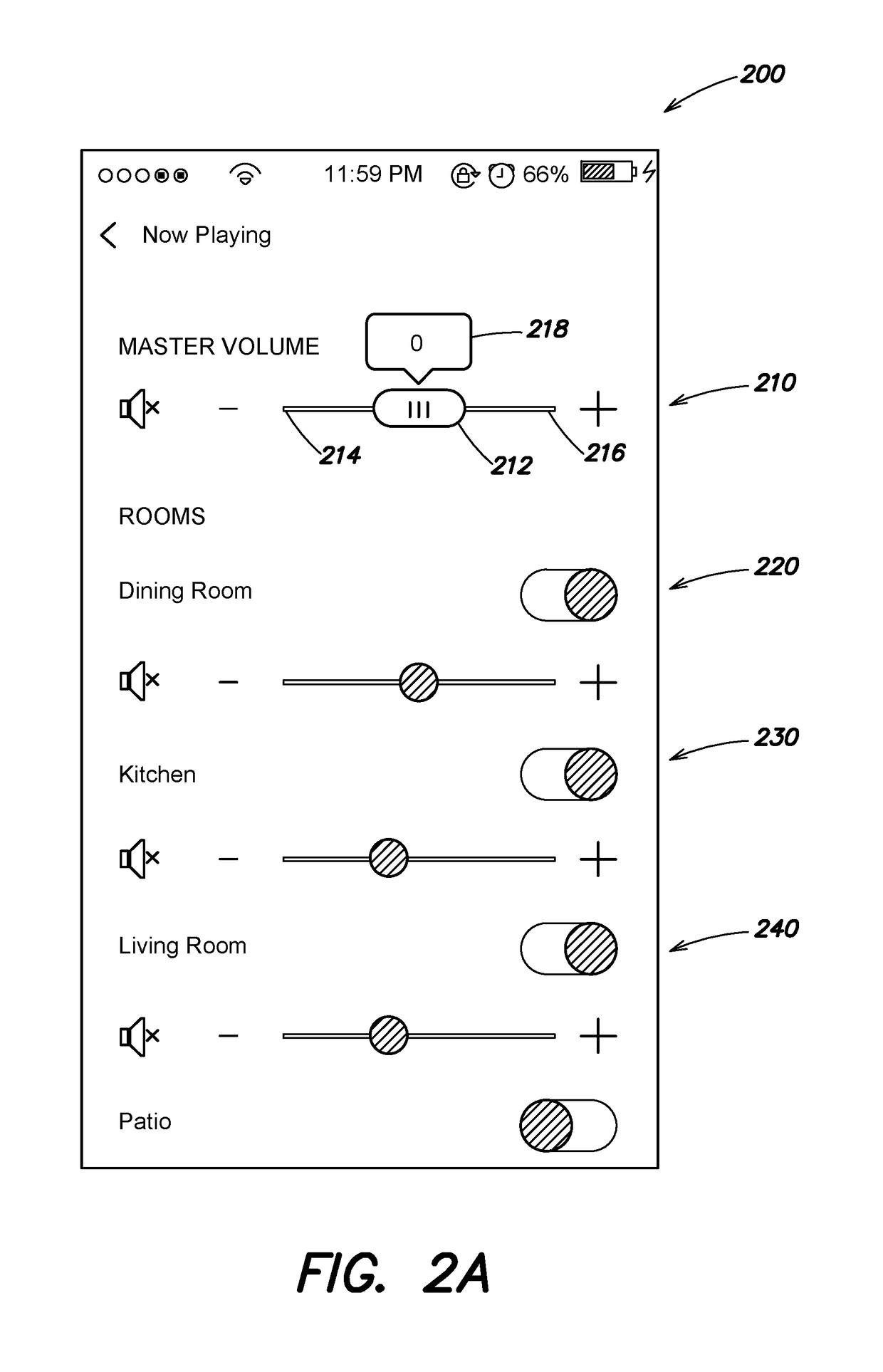Volume control for audio/video devices
a technology for audio/video devices and volume control, applied in the direction of transducer details, instruments, signal processing, etc., can solve the problems of user difficulty in fine adjustment of volume, user difficulty in making large adjustments of volume, user difficulty in easily “overshooting” their intended target, etc., to achieve the effect of improving volume control and reducing volum
- Summary
- Abstract
- Description
- Claims
- Application Information
AI Technical Summary
Benefits of technology
Problems solved by technology
Method used
Image
Examples
Embodiment Construction
Definitions
[0019]As used herein, the term “home automation system” should be interpreted broadly to encompass various types of home control, “smart home”, and / or device control systems that may control devices (e.g., A / V devices, HVAC devices, lighting devices, security devices, electronic door locks, and / or other types of devices) of a building, such as a residential or commercial building. A home automation system may control a variety of different types of devices, or devices of only a particular type (e.g., only A / V devices).
[0020]As used herein, the term “A / V device” refers to an electronic device that is capable of providing an audio output, and possibly a video output. Devices such as receivers, amplifiers, televisions, media players, and the like are examples of A / V devices.
[0021]As used herein, the term “mobile device” refers to an electronic device that executes a general-purpose operating system and is adapted to be transported on one's person. Devices such as smartphones...
PUM
 Login to View More
Login to View More Abstract
Description
Claims
Application Information
 Login to View More
Login to View More - R&D
- Intellectual Property
- Life Sciences
- Materials
- Tech Scout
- Unparalleled Data Quality
- Higher Quality Content
- 60% Fewer Hallucinations
Browse by: Latest US Patents, China's latest patents, Technical Efficacy Thesaurus, Application Domain, Technology Topic, Popular Technical Reports.
© 2025 PatSnap. All rights reserved.Legal|Privacy policy|Modern Slavery Act Transparency Statement|Sitemap|About US| Contact US: help@patsnap.com



